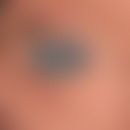Synonym(s)
DefinitionThis section has been translated automatically.
Budd-Chiari syndrome (BCS) is due to obstruction of the venous outflow of the liver, either at the level of the hepatic veins or the terminal segment of the vena cava. Rare complication occurring with chemotherapy with dacarbazine. Obstruction leads to liver congestion and ischemic necrosis. The severity depends on the rapidity with which the obstruction develops and the extent of the obstruction.
ClassificationThis section has been translated automatically.
Primary Budd-Chiari syndrome (most common cause of occlusion is thrombosis).
Secondary Budd-Chiari syndrome (result of tumor invasion into the venous lumen or compression of the vein by a growing tumor).
You might also be interested in
Occurrence/EpidemiologyThis section has been translated automatically.
The prevalence is largely unknown, with estimates ranging from 1:50,000 to 1:100,000.
EtiopathogenesisThis section has been translated automatically.
Primary BCS is associated with a number of factors that favor the occurrence of venous thrombosis: Primary myeloproliferative syndromes (in 50% of cases, manifest as 'forme fruste' or atypical form of the disease but diagnosed by detection of a JAK2 gene mutation), Factor V Leiden thrombophilia, Protein C deficiency, Antiphospholipid syndrome, Behcet's disease, Paroxysmal nocturnal hemoglobinuria, Use of oral estrogen-progesterone contraceptives, Inflammatory colitis.
Secondary Budd-Chiari syndrome results from tumor invasion of the venous lumen or compression of the vein by a growing tumor.
ClinicThis section has been translated automatically.
The main manifestations of BCS are ascites (often massive and refractory to therapy) with malnutrition and renal insufficiency, gastrointestinal bleeding due to portal hypertension, liver insufficiency with hepatic encephalopathy and severe infections. However, asymptomatic forms have also been described.
In primary Budd-Chiari syndrome, thrombi reorganize into fibrous tissue during the course of the disease, causing either localized stenosis or diffuse occlusion with transformation into fibrous strands. Localized stenosis may appear as membranous structures.In chronic course: cirrhosis in large liver, splenomegaly, ascites, collaterals formation.
ImagingThis section has been translated automatically.
Imaging of the hepatic veins and the inferior vena cava with non-invasive imaging techniques (Doppler ultrasound, tomodensitometry, MRI) usually allows the diagnosis to be made by a radiologist with sufficient experience if suspicion exists. Hepatic venography or cavography or liver biopsy are usually not required.
DiagnosisThis section has been translated automatically.
Detection by colour Doppler sonography
TherapyThis section has been translated automatically.
Therapy is aimed at correcting the causes of the risk of thrombosis, long-term therapy with anticoagulants, recanalization of the occluded veins by interventional radiology, TIPS (transjugular intrahepatic portosystemic shunt) and, if other treatment methods fail, liver transplantation.
Progression/forecastThis section has been translated automatically.
The natural course of BCS is very unfavorable, without treatment less than 10% of patients survive three years. Today, with early diagnosis and rapid initiation of therapy, the 5-year survival rate is over 90%. Therapy is aimed at correcting the causes of the risk of thrombosis, long-term therapy with anticoagulants, recanalization of the occluded veins by interventional radiology, TIPS (transjugular intrahepatic porto-systemic shunt) and, if other treatment methods fail, liver transplantation. The long-term prognosis is determined by the nature of the associated risk of thrombosis.
LiteratureThis section has been translated automatically.
- Chiari H (1877) On three cases of primary carcinoma in the fundus and corpus of the uterus. Med Jb, 1877: 364-368.
- Chiari H (1891) On gastric syphilis. International contributions to scientific medicin. Festschrift dedicated to Rudolf Virchow. Berlin 2: 295-321.
- Chiari H (1904) On the syphilitic diseases of the aorta. Verhandlungen der Deutschen pathologischen Gesellschaft 6: 137-163.
Disclaimer
Please ask your physician for a reliable diagnosis. This website is only meant as a reference.




